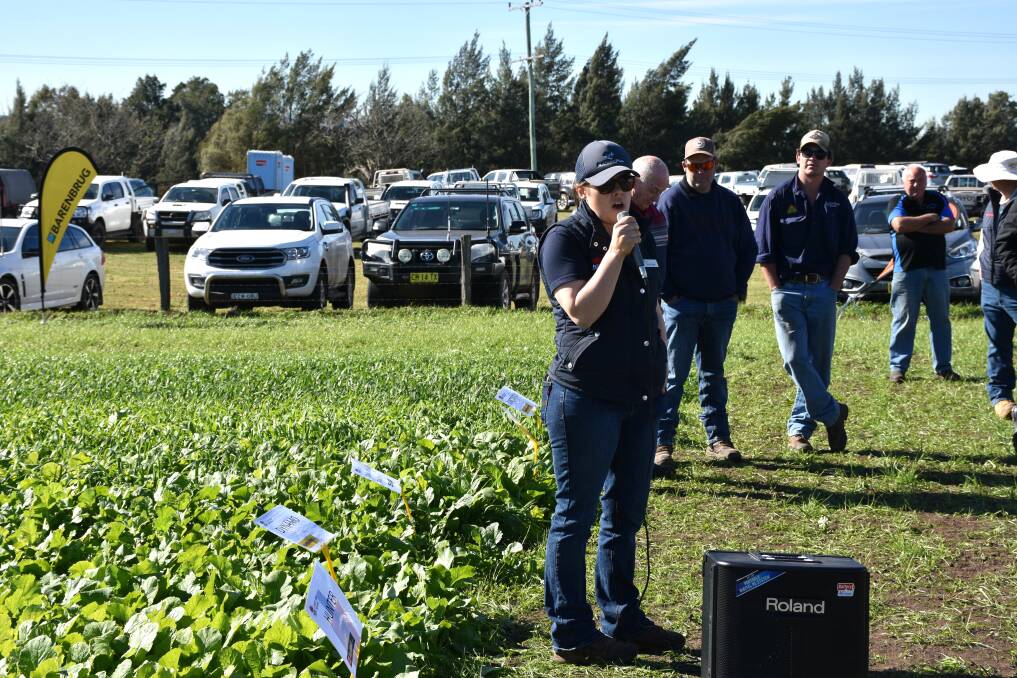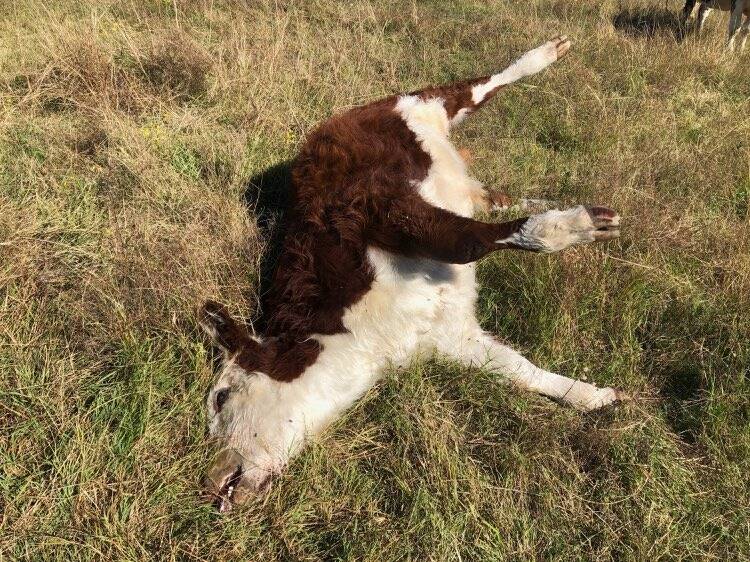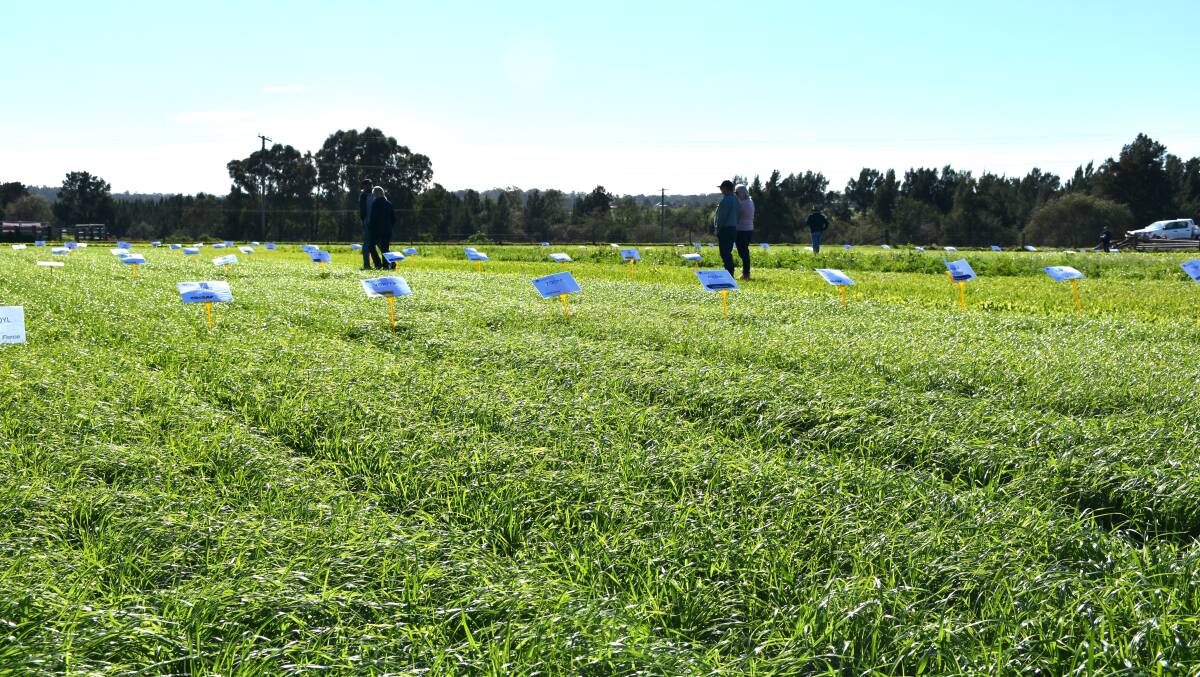
Farmers were gathered to hear the latest on pastures and winter cereals but it is no use having paddocks chock-a-block of feed if the livestock aren't thriving or even worse dying from an easily treatable disease.
Subscribe now for unlimited access.
or signup to continue reading
As they say there isn't much of a profit from a dead animal.
So attention at the Hunter Local Land Services' recent pasture field day held at Singleton quickly turned to animal heath.
The message from veterinarians and industry representatives was vaccinate, vaccinate and vaccinate.
For a few dollars per head the price and labour involved in vaccination is the least expensive part of your animal management but the one that provides the best return on that investment.
In addition to vaccinations there was also the need for drenching, worm monitoring through testing and the use of minerals - all designed to aid animals health and well being and lift productivity. Getting the most out of your pastures involves good livestock management.

Standing alongside thriving winter cereals on the Hunter Rivers flats District Vet Dr Kristi Arnot said she had attended and other vets had been called to undertake autopsies on several animals, with common causes of death including pulpy kidney and black leg.
"Given the current high value of cattle, these are avoidable losses if producers maintain a regular vaccination schedule," she said.
"A five-in-one vaccine costs less than one dollar per animal, it's a cheap insurance policy no matter whether you are protecting a young calf, heavy steer or stud animal.
"Every time you are planning to move stock onto different feed, if you are moving them to a different property or you have bought stock in from another area, vaccinate.
"You can vaccinate them every three months and I highly recommend all producers maintain a regular vaccination program to protect against losses from these common illnesses."
Speakers including Dr Arnot said high performance pastures can raise the risks of nitrate poisoning especially when producers have brought livestock into the Hunter who are not used to our high-nitrate area, or introduced new feed.
Nitrate poisoning is caused by high nitrate levels in feed and it usually occurs in late autumn or winter, particularly during a flush of growth after rain. Livestock that graze on lush green feed and weeds high in nitrate can die suddenly.
"Hunter Local Land Services is still offering free feed testing, which has been part of our drought support initiatives, to ensure producers have peace of mind before feeding out new fodder or transferring stock onto new pastures," said Dr Arnot.
"It really is essential to be aware of the nitrate poisoning, because following autumn rain, landholders need to take extra care when shifting livestock onto green feed."
While the discussions were about how best to grow and manage pastures finding the livestock to turn those pastures into a good return remains an issue for many in particular farmers who had to drastically destock during the 2016-19 drought.
With record prices for young cattle this year and similar prices for breeders farmers wishing to rebuild their herds or simply buy restocker cattle have often been priced out of the market.
Hunter Local Land Services, livestock officer based at Merriwa, Teresa Hogan said producers were having to be innovative when it came to restocking.
Winter cereals flourishing on prime Hunter River flats near Singleton the site of a pasture/crop trial now in its fourth year.

"The cattle market since the drought broke in 2020 has just gone up and up and thats proven to be a financial challenge for farmers looking to rebuild herds or buy in trader cattle," she said.
"Now they have the grass to run stock but cannot afford to buy livestock to use that grass to produce an income."
In the Upper Hunter some farmers have have a shift to sheep production however that hasn't come without its headaches as the on-farm infrastructure may not have been used for 30 years.
"Sheep are attractive because there is a quicker turnover, with lambs able to marketed from five months of age. But there is the added expense of getting the infrastructure up to speed," she said.
"Before producers spend money they must do their homework, talk to agents, to staff at the LLS see whats the best options for their enterprise. And they must remember this can be a slow process to get back to their pre-drought productivity."
Talking of sheep Barbers Pole worm has become a menace since the drought broke.
Before drenching producers were advised to ensure they carried out worm tests on their flock. Monitoring the worm count could save money on drenching. Paddock rotation can also help to lower worm infestations.
Liver fluke was also present in the region due to its spread from feral deer. It can lead to weight loss and death in livestock.


